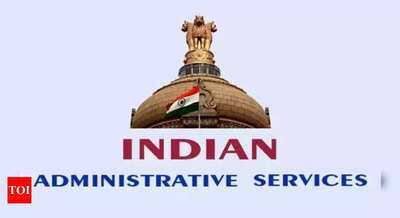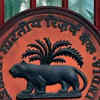
Even after 75 years of independence, the shadow of British rule continues to stretch across many of India's most fundamental institutions. While India has made remarkable strides since 1947, the influence of its colonial past remains deeply embedded in its education system, governance, legal framework, and infrastructure. This isn’t just about the obvious remnants like language or historical monuments—it's about the very structure of how India operates today. From the railway tracks that crisscross the country to the laws that govern its citizens, British systems have been modified, but not erased.
In this article, we explore the lasting legacy of British rule in India, examining how these systems, which were once tools of colonial control, have evolved into the backbone of India's modern identity. The British may have left in 1947, but their policies, practices, and institutions remain as fixtures of the Indian landscape.
1. The Education System: A Colonial Blueprint, Still in UseThe education system that the British imposed upon India was never meant to benefit the masses. Its true purpose was to create a class of educated Indians who could serve as clerks, administrators, and soldiers in the British empire. However, as time went on, the education system became a key part of India's intellectual fabric.
The English Medium System

The British system prioritized English over native languages, shaping India’s linguistic culture for generations. Today, English-medium schools continue to dominate, serving as the gateway to global opportunities. This colonial influence has, in many ways, shaped India’s professional and educational hierarchy. The notion of
"English education = success" remains a prevalent mindset, especially among the middle class. The obsession with elite, English-speaking schools reflects the remnants of a colonial past where knowledge and power were tightly linked to the English language.
The Western Curriculum

While the British may have imported their own curriculum to serve imperial needs, it has since been expanded to include global subjects. However, the core of this education—subjects such as history, economics, and science—often carries the bias of Western narratives. This educational foundation paved the way for India’s remarkable growth in fields like science, technology, and law. Yet, it’s hard to ignore the fact that much of India’s modern education is still built on principles laid down during colonial rule.
2. The Parliamentary System: A Legacy of British Democracy

When India adopted its parliamentary system in 1950, it wasn’t reinventing the wheel—it was following in the footsteps of its former rulers. The Indian Parliament mirrors the structure of the British Parliament, down to the two houses: the Lok Sabha (House of the People) and the Rajya Sabha (Council of States). While India’s democracy has evolved into its own entity, the foundational structure—the bicameral system, elections, and the Westminster-style governance—comes straight from Britain.
Debates, Laws, and Parliamentary Procedures

The functioning of India’s Parliament, from debates to the introduction of bills, follows British parliamentary procedures. This includes the process of passing laws, with the Lok Sabha and Rajya Sabha serving as checks and balances on each other. The concept of a
leader of the opposition and the model of
no-confidence motions—all inherited from Britain—continue to shape India’s political discourse today.
3. The Railway System: A Colonial Gift That Became India’s Lifeline

Arguably one of the most enduring legacies of British rule, India’s vast railway network was initially built to transport raw materials and goods from the Indian subcontinent to Britain. The British Empire’s most ambitious infrastructure project, the railways were constructed not for Indian benefit but to streamline colonial control.
The Lifeblood of the Nation
Today, the Indian Railways remains one of the world’s largest rail networks, transporting millions of passengers and tons of goods every day. While the purpose may have shifted, the foundational routes and infrastructure laid by the British continue to serve India’s growing economy. The railway stations, the system of trains, and the administrative structures are all largely based on colonial designs. Though India has expanded and modernized the railway system, its colonial origins are undeniable.
4. Economic Policies: British Institutions Shaping India’s Modern Economy
India's economic policies post-independence may have focused on self-reliance and industrialization, but several institutions and structures built during British rule continue to play an essential role in India’s economy today.
The Reserve Bank of India: The British Legacy

When the Reserve Bank of India (RBI) was established in 1935, it was modeled after the Bank of England, tasked with regulating currency, managing credit, and overseeing financial institutions. The RBI’s role, although broadened post-independence, still adheres to the general framework established during British rule.
Economic Planning: The British Roots
British policies focused on extracting India’s resources for its benefit. Today, India’s economic planning, particularly in the area of public finance and resource management, still reflects colonial economic strategies. From tax collection methods to the management of public debt, India’s post-independence economic systems were often modeled after British institutions.
5. Bureaucratic Structure and Police Forces: The ‘Steel Frame’ of IndiaThe Indian Administrative Service (IAS) and the police force are two prime examples of colonial legacies.
The Bureaucratic Hierarchy

The British established a centralized, hierarchical bureaucratic system to govern India efficiently. The Indian Civil Service (ICS), referred to as the "steel frame" of British governance, became the model for India’s post-independence administrative machinery. The IAS, though more inclusive and representative, continues to follow a similar structure, with officials at the top of the hierarchy having vast administrative powers.
The Police Force: A Legacy of ControlThe British also established a centralized, uniformed police force to maintain order and enforce their policies. The Police Act of 1861 laid the groundwork for India’s modern police forces. Today, while police reform remains a critical issue, the colonial structure of policing—top-down, with little accountability—still pervades India’s law enforcement system.
6. Legal System: A Common Law Legacy

One of the most significant British legacies is India’s legal system, which is based on British common law. The Indian Penal Code (IPC), drafted by the British in 1860, remains the cornerstone of Indian criminal law. Similarly, the Indian Contract Act (1872) continues to govern commercial transactions in India.
The Common Law Influence
India’s legal framework, with its reliance on precedent and case law, reflects the British common law tradition. While many laws have been modified or adapted to India’s needs, the core structure remains unchanged. The judicial system, with its Supreme Court, High Courts, and lower courts, mirrors the British system in many ways. India’s legal practices—from trial procedures to court functions—still follow the British model to a large extent.
Though India gained political independence in 1947, the systems established by the British continue to play a significant role in the country's functioning today. The education system, parliamentary governance, railways, economic policies, bureaucracy, police forces, and legal frameworks all have their roots in British colonial rule.
While these institutions have evolved to reflect India’s unique identity, they remain indelibly linked to colonial influences. Understanding these legacies is essential for comprehending how India navigates its modern challenges and how it continues to reconcile its colonial past with its aspirations for the future.
As India moves forward, the question remains: how will it adapt these inherited systems to suit its evolving needs, or will it continue to rely on frameworks first constructed during its colonial days?
 Even after 75 years of independence, the shadow of British rule continues to stretch across many of India's most fundamental institutions. While India has made remarkable strides since 1947, the influence of its colonial past remains deeply embedded in its education system, governance, legal framework, and infrastructure. This isn’t just about the obvious remnants like language or historical monuments—it's about the very structure of how India operates today. From the railway tracks that crisscross the country to the laws that govern its citizens, British systems have been modified, but not erased.
Even after 75 years of independence, the shadow of British rule continues to stretch across many of India's most fundamental institutions. While India has made remarkable strides since 1947, the influence of its colonial past remains deeply embedded in its education system, governance, legal framework, and infrastructure. This isn’t just about the obvious remnants like language or historical monuments—it's about the very structure of how India operates today. From the railway tracks that crisscross the country to the laws that govern its citizens, British systems have been modified, but not erased.







